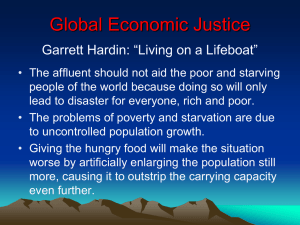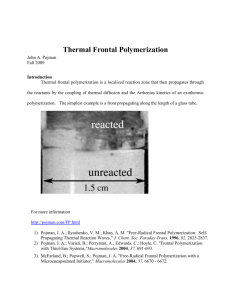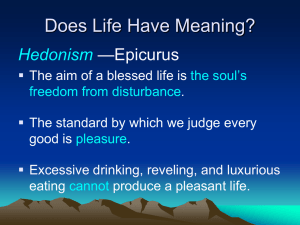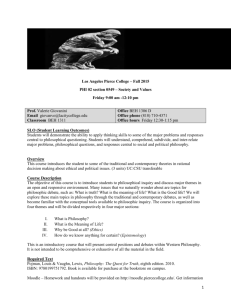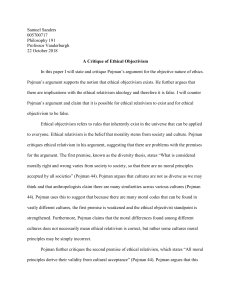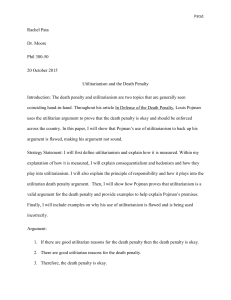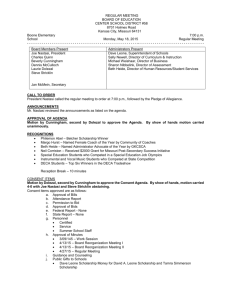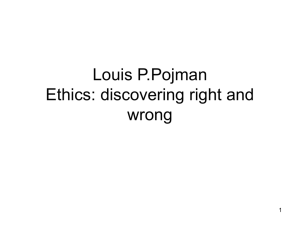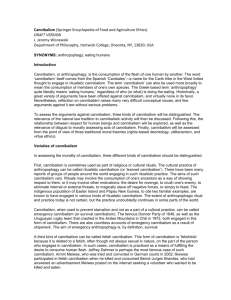Abel Tomlinson
advertisement
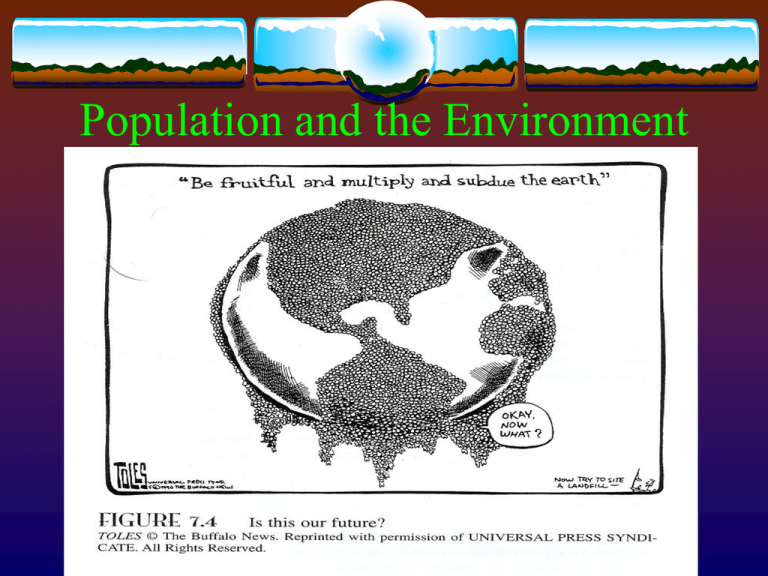
Population and the Environment Arithmetic vs. geometric growth • Arithmetic growth • 1, 2, 3, 4, 5… • Geometric growth (exponential) • 2, 4, 8, 16, 32… (Cunningham et. al: Environmental Science: A Global Concern) Population growth • 2 to 6,600,000,000 last century • 1B/decade 100M/year 300K/day • 1 NYC/month • 296B in 150 years! (Cunningham et. al: Environmental Science: A Global Concern) Carrying capacity • Overshoot • Dieback “crash” • Increase w/ technology, but sustainable? • What is Earth’s sustainable CC? (Cunningham et. al: Environmental Science: A Global Concern) Fertility rates (replacement is 2.1) (Rubenstein: Introduction to Human Geography) Questions to think about • • • • • Why are we growing so fast? Why should we be concerned? People are good aren’t we? How does population affect the environment? What needs to be done? (Pojman: Population: General Considerations) Growth causes • Higher fertility rate & lower death rate • Industrial Revolution • Fossil fuel & combustion engine • Agricultural advances • Fertilizer, irrigation & genetics • Medical, health & sanitation revolution • Vaccines, antibiotics, nutrition, sewage, cleaner water, etc. • Socioeconomic, religious & primal instinct factors (Newton and Dillingham: The Human Family Grows: Population as a Problem) Malthus vs. Condorcet • Geometric pop. growth • Arithmetic subsistence growth • Overshoot CC • Starvation, disease & resource wars • Advance in technology = more improvement • Moral advancement • Women's rights (Pojman: Population and the Environment) Optimist • More people = more brains = more progress • Healthcare, economic opportunity & technology • Creative resources are infinite (Newton and Dillingham: The Human Family Grows: Population as a Problem) Pessimist • More people = more pollution & global warming • Irreplaceable resources • Air, water, soil, species, etc. • Agricultural & economic collapse • Creative resources aren’t infinite • Brains like Einstein or Mozart are very rare • Geniuses need education & food too (Newton and Dillingham: The Human Family Grows: Population as a Problem) Current consequences • Water depletion & pollution (33%) • Soil degradation (43%) • Deforestation • Biodiversity • Extinction (27,000/ yr.) • Famines • Unemployment • 2B malnourished (½ children) • Resource depletion • US oil: 15 yrs • World oil: 50 yrs (Newton and Dillingham: The Human Family Grows: Population as a Problem) Overcrowding stress • Intense competition • Psychological, physical and behavioral changes • Weakened immunity, aggression, cannibalism, arteriosclerosis and increased mortality • Symptoms include abnormal adrenal glands & deterioration of circulatory system, kidney and liver (Cunningham et. al: Environmental Science: A Global Concern) Women and population • Historically suppressed & • Islam ”Men are above women regarded as inferior because Allah has given the one superiority above the other” • Men & religion control reproductive rights, education • Confucius ”one hundred girls are and career opportunity not worth one boy” • No independence • Hinduism ”A woman must never enjoy independence” • Christianity ”The women shall be vassals to their men who are their masters” Family planning • 97% of growth in poor nations with little access to reproductive services • AID found many women want to limit pregnancies • Funding cuts and “gag rule” (Cunningham et. al: Environmental Science: A Global Concern) Consumption and the environment • I = PAT • Hunter gatherer • 2,500 calories • Modern American • 186,000 calories • Equivalent to sperm whale • US most overpopulated in this context • Rich vs. poor nations (Pojman: Population General Considerations ) Disproportionate consumption • US has 4.5% pop. • Use 33% of all resources • Produce 75% toxic waste & 33% total waste • Produce the most greenhouse emissions • Waste 200,000T edible food/d • Eat 200B extra calories/d (feed 80 million) • 1/3+ overweight & spend $30B/yr on diets • Justifiable? (Pojman: Population General Considerations) Death context • 3,200 died tragically on 911 • Relatively unpreventable • Over $5 billion in aid • 33,000 children die/d unnecessarily from malnutrition and poverty-related disease • Easily preventable • 15-25 cents/d would save the majority • Political & religious authorities moral and pro-life? (Pojman: Hunger, Duty, and Ecology: On What We Owe Starving Humans) Consumption of meat • Morality • Death of animals & people • 13 lbs. grain/ lb. meat • 22MT seeds produced in US, 20MT fed to livestock • 90% net loss 14 MT protein • Health • Consumption increases risk of degenerative diseases • Heart disease, obesity, diabetes & cancer • Fat deposits in arteries of typical US child by age 3 & 70% by age 12 • Greed & God? (Pojman: Hunger, Duty, and Ecology: On What We Owe Starving Humans) Consumption solutions • Progressive policies • Simple • • • • • Reduce consumption Recycle waste Eat less meat Buy used stuff Don’t waste • Advanced • Less children • Invest in sustainable businesses • Consider impact of decisions and actions • Refocus reality away from material happiness Population solutions • Halt & reverse growth to sustainable level • Serious political & religious debate and reform • Socioeconomic empowerment • Educational & employment opportunities • Social security systems • Family planning services • Environmentally sustainable development (Newton and Dillingham: The Human Family Grows: Population as a Problem) Easter Island history • • • • • • • Initially lush forest, fertile soil & abundant wildlife Overpopulation Deforestation Soil & water depletion Extinction of wildlife Chaos and warfare Cannibalism reduced population by 90% • • • • Why didn’t they control their population? Why didn’t they conserve their resources? Will we follow the same course? Should we be optimists, pessimists or both? (Cunningham et. al: Environmental Science: A Global Concern) Henry Kendall of MIT- ”If we don’t control the population with justice, humanity, and mercy, it will be done for us by nature-brutally.” HIV/AIDS (Rubenstein: Introduction to Human Geography) Mexican immigration • • • • Destabilize employment and economy? Overcrowding Higher resource and environmental pressures More native blood = more right to land & resources? Religious leaders • • • • • • • • Hindu god Rama: two daughters Buddha: one son Jainism prophet Mahavira: one daughter Confucius: one son Taoism founder Loa-tzu: no children Moses: two sons Jesus Christ: no children Islamic prophet Mohammed: one daughter
